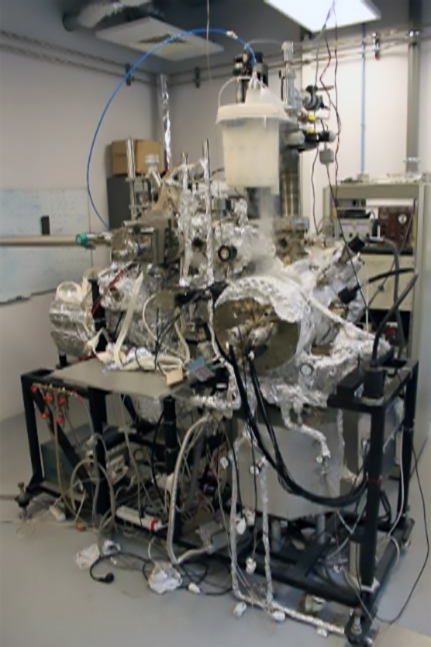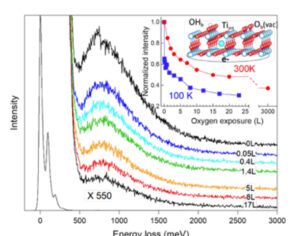The HREELS spectroscopy (High Resolution Electron Energy Loss Spectroscopy) consists in analysing both in energy and direction electron back reflected by a surface irradiated by a beam of mono-kinetic electrons the energy of which is around a few eV with a resolution of a few meV. The scattering is mainly due to the interaction of the Coulomb field of the electron and the surface dipolar field.The measurements of the losses and gains of energy (Anti Stokes modes) and of their dispersion with the parallel wavevector allow probing most of the low-energy surface excitations:
- surface phonons;
- vibrational modes of atoms or isolated molecules;
- surface and interface plasmons;
- low energy electronic excitations, in particular due to the bandgap states.
The spectrometer of LK-2000 type (from LKTech) consist of two 127° electrostatic analysers in series and of a mobile monochromator. The ultimate resolution (FWHM of specular peak) is of the order of 5meV. A five-axis manipulator allows setting sample orientation/position and to cool it down (100 K). Measurements of bulk insulating surfaces are possible thanks to adefocussed ancillary electron gun that allows compensating from charge effects. This apparatus made it possible the study of the origin in terms of defects, of the dual polaronic nature of excess electrons at the surface of TiO2 rutile and of molecular adsorbates at its surface.

Caption: Chamber housing the HREELS spectrometer.

Figure : Evolution of the polaronic bandgap state in TiO2 during the exposure of the surface to O2.
This apparatus makes it possible to study the origin in terms of defects and the dual polaronic nature of the excess electrons in titanium dioxide but also the molecular adsorptions on its surface..
Contact
- Stéphane Chenot :stephane.chenot(at)insp.jussieu.fr
- Stéphane Guilet : stephane.guilet(at)insp.jussieu.fr
- Rémi Lazzari : remi.lazzari(at)insp.jussieu.fr

